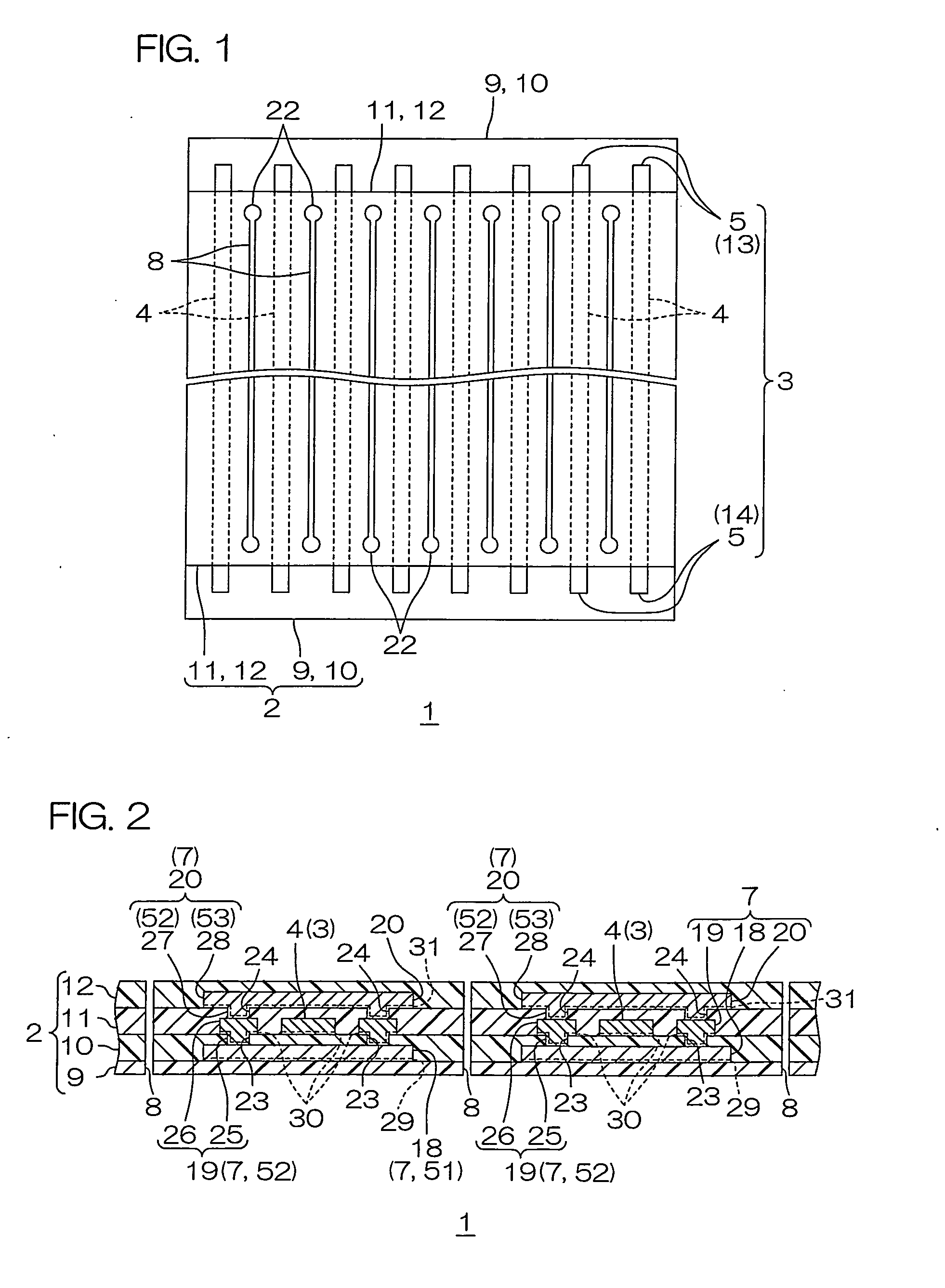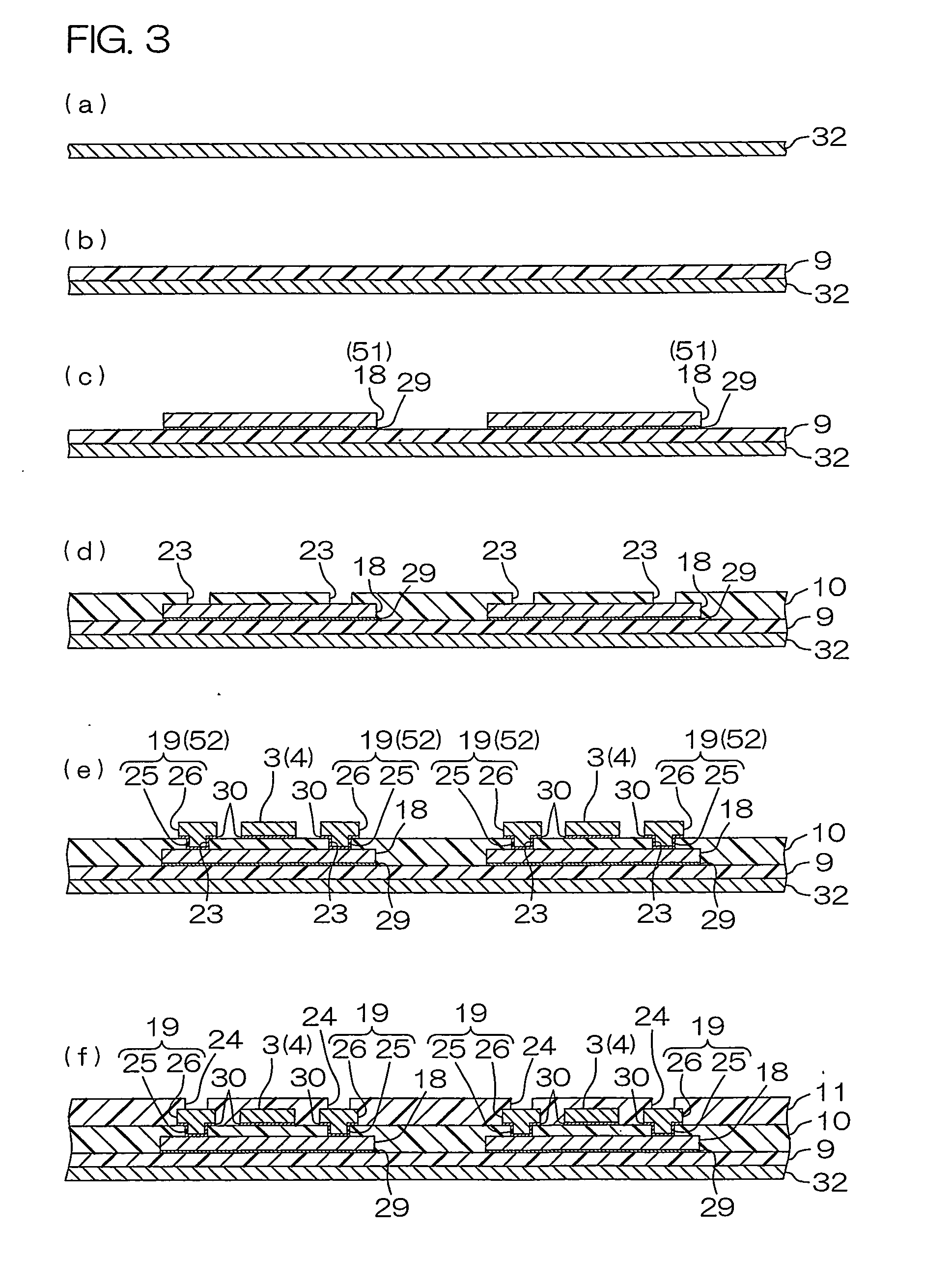Wired circuit board and electronic device
a wired circuit board and electronic device technology, applied in the direction of cross-talk/noise/interference reduction, coupling device connection, electrical apparatus casing/cabinet/drawer, etc., can solve the problem of signal wiring being broken under such stress, transmission loss in the conductor layer (line), and difficulty in preventing a breakage of the conductive layer. , to achieve the effect of excellent long-term reliability
- Summary
- Abstract
- Description
- Claims
- Application Information
AI Technical Summary
Benefits of technology
Problems solved by technology
Method used
Image
Examples
example 1
[0185]A metal supporting board made of stainless steel having a thickness of 20 μm was prepared (see FIG. 3(a)). Then, a varnish of a photosensitive polyamic acid resin was coated on the upper surface of the metal supporting board, dried, exposed to light via a photomask, developed, and cured by heating to form a first insulating layer made of polyimide having a thickness of 12 μm on the metal supporting board (see FIG. 3(b)).
[0186]Next, a chromium thin film having a thickness of 0.03 μm and a copper thin film having a thickness of 0.07 μm, each as a first metal thin film, were successively formed on the upper surface of the first insulating layer by chromium sputtering and copper sputtering. Subsequently, a plating resist was formed in a pattern reverse to the pattern of first ground layers on the upper surface of the first metal thin film. Then, in accordance with an additive method, the first ground layers (lower ground layers) each made of copper having a thickness of 12 μm and ...
PUM
 Login to View More
Login to View More Abstract
Description
Claims
Application Information
 Login to View More
Login to View More - R&D
- Intellectual Property
- Life Sciences
- Materials
- Tech Scout
- Unparalleled Data Quality
- Higher Quality Content
- 60% Fewer Hallucinations
Browse by: Latest US Patents, China's latest patents, Technical Efficacy Thesaurus, Application Domain, Technology Topic, Popular Technical Reports.
© 2025 PatSnap. All rights reserved.Legal|Privacy policy|Modern Slavery Act Transparency Statement|Sitemap|About US| Contact US: help@patsnap.com



